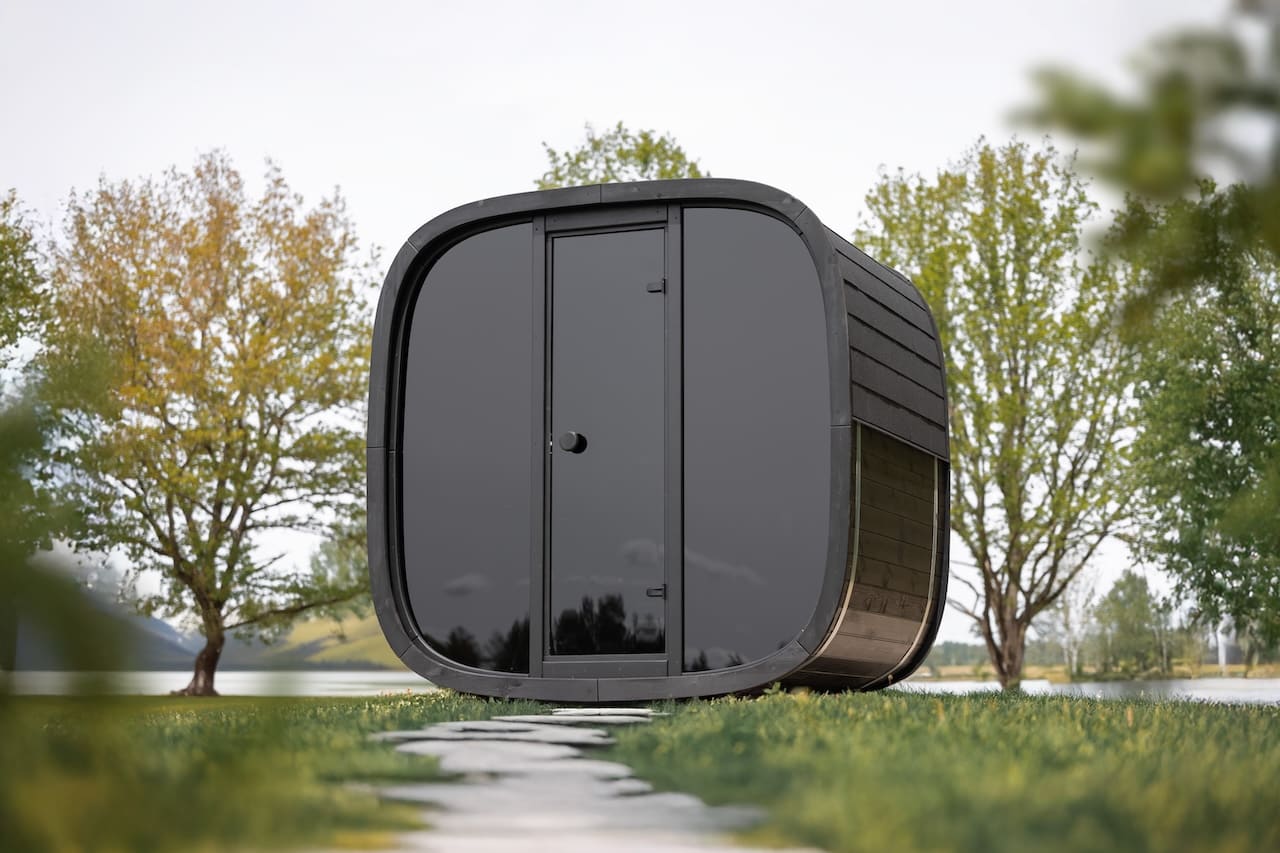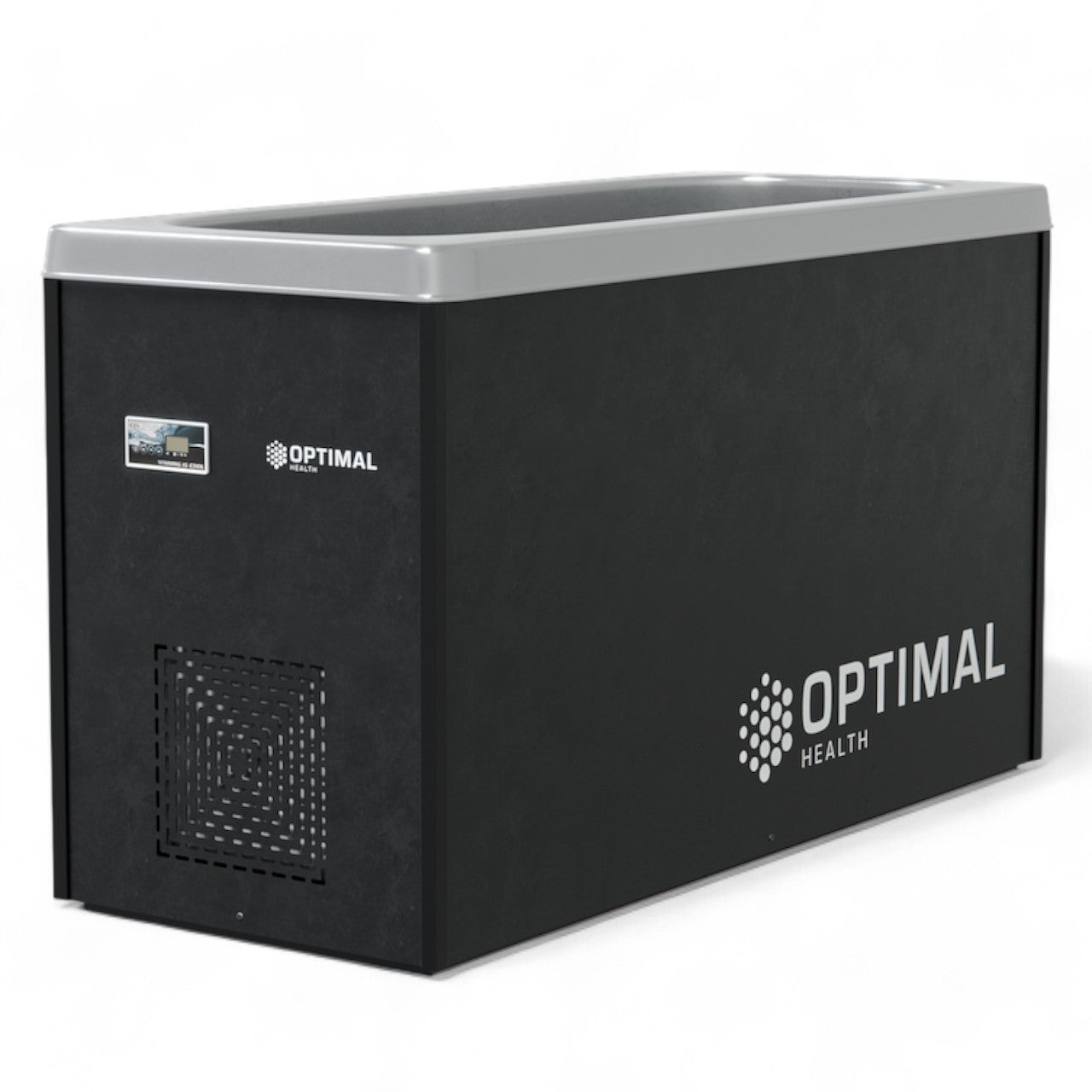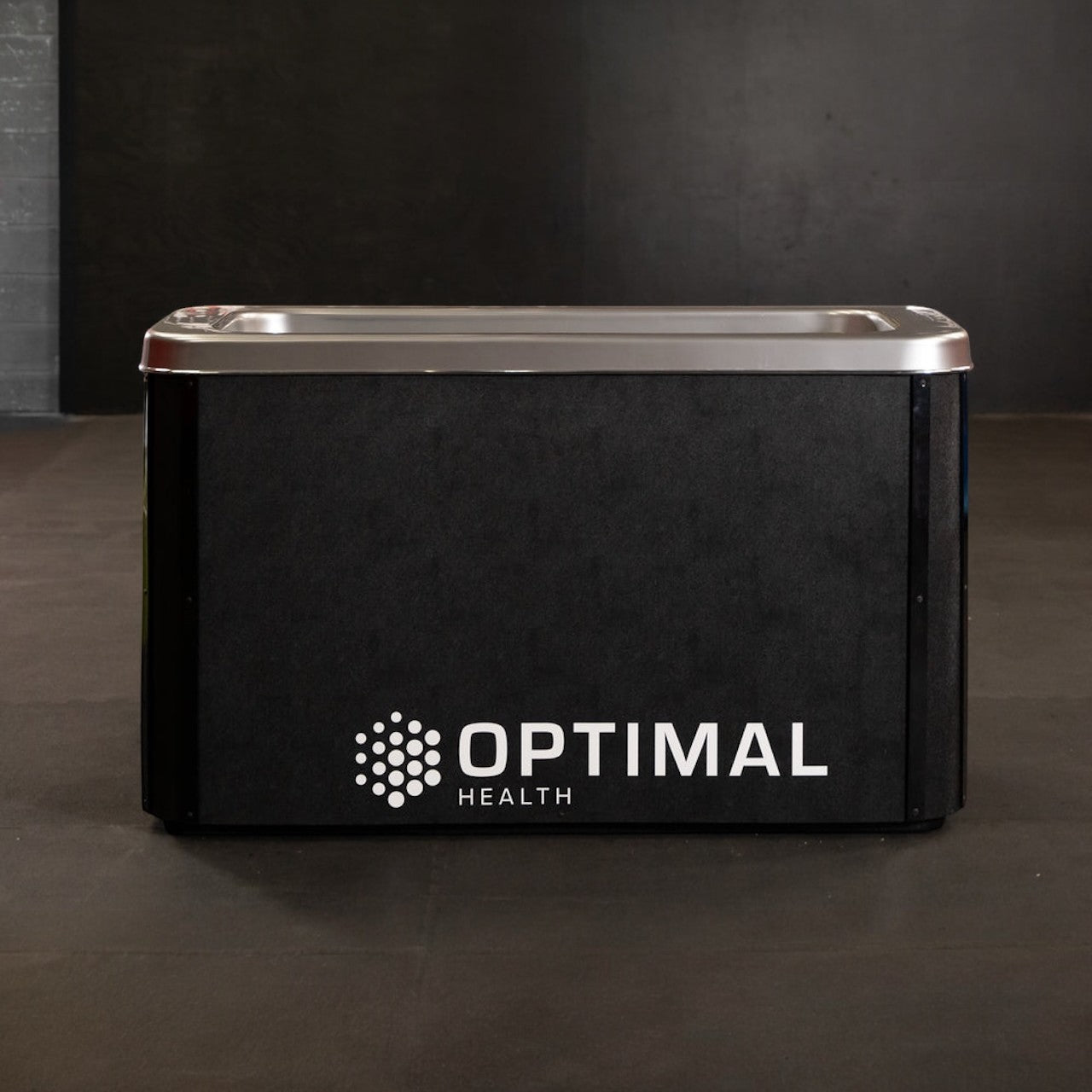At Heracles Wellness, we believe in empowering our customers with accurate health insights, which is why we are strong advocates for body composition scales. These scales have become increasingly popular in recent years as they provide critical data to help individuals track their fitness progress. Using bioelectrical impedance analysis (BIA) technology, these scales estimate body composition by sending a small electrical current through the body. This current passes more easily through fat-free tissue, such as muscle, than through fat tissue, enabling the scale to estimate body fat percentage. We stand by the precision and usability of these scales as they deliver valuable health information right at your fingertips.
However, the accuracy of body composition scales has been a topic of debate. Factors such as hydration levels, time of day, and even foot calluses can affect the readings, leading to inconsistent results. Some studies have found that body composition scales can underestimate body fat in lean individuals and overestimate it in overweight individuals.
Key Takeaways
- Body composition scales estimate body fat percentage using BIA technology.
- The accuracy of body composition scales can be affected by various factors, leading to inconsistent results.
- Studies have found that body composition scales can sometimes be inaccurate, especially in lean or overweight individuals.
Understanding Body Composition Scales
Body composition scales are devices that can measure a person's weight and body composition at home. They are becoming increasingly popular as people want to keep track of their fitness and health. These scales can provide a more comprehensive picture of a person's health than just body weight alone. They can measure body fat, muscle mass, bone density, water weight, and more.
Body composition scales use bioelectrical impedance analysis (BIA) to measure body composition. BIA sends a small electrical current through the body and measures the resistance of the current as it passes through the body. The resistance is then used to estimate the body's composition.
While body composition scales can be a useful tool for tracking progress, it's important to understand that they may not always be accurate. Factors such as hydration levels, time of day, and food intake can affect the readings.
It's also important to note that body composition scales may not be suitable for everyone. They may not be accurate for athletes or people with a high muscle mass, as muscle can conduct electricity better than fat.
When purchasing a body composition scale, it's important to consider the display and weight capacity. Some scales have a small display that can be difficult to read, while others have a large, easy-to-read display. Weight capacity is also important, as some scales may not be suitable for people who weigh more than a certain amount.
Overall, body composition scales can be a useful tool for tracking progress and monitoring health. However, it's important to understand their limitations and use them in conjunction with other methods, such as BMI and body fat calipers, to get a more accurate picture of a person's health.
The Technology Behind Body Composition Scales
Body composition scales are devices that measure the percentage of fat, muscle, and bone in the human body. These scales use various technologies to estimate body composition, and their accuracy can vary depending on the technology used.
Bioelectrical Impedance Analysis
Bioelectrical impedance analysis (BIA) is a common technology used in body composition scales. BIA works by passing a small electric current through the body and measuring the resistance to the current. The resistance is then used to estimate the amount of body fat.
BIA is based on the principle that fat tissue has a lower electrical conductivity than muscle tissue. The current passes more easily through muscle tissue than through fat tissue. Therefore, the more resistance there is to the current, the higher the percentage of body fat.
BIA is a relatively simple and non-invasive technology, making it a popular choice for home body composition scales. However, the accuracy of BIA can be affected by factors such as hydration levels, body temperature, and the position of the electrodes on the body.
Dual-Energy X-Ray Absorptiometry (DEXA)
Dual-energy X-ray absorptiometry (DEXA) is a medical imaging technology that is considered the gold standard for measuring body composition. DEXA works by passing two low-dose X-ray beams through the body and measuring the amount of radiation absorbed by the bones and soft tissues.
DEXA can provide accurate measurements of bone mineral density, lean tissue mass, and body fat percentage. However, DEXA is a more expensive and time-consuming technology than BIA, and it requires specialized equipment and trained personnel to operate.
Bod Pod
The Bod Pod is a body composition technology that uses air displacement plethysmography to measure body composition. The Bod Pod works by measuring the amount of air displaced when a person sits inside a small chamber.
The Bod Pod calculates body composition based on the principle that fat tissue and lean tissue have different densities. The more air displaced, the larger the person's volume, and the lower their density. This allows the Bod Pod to estimate body fat percentage accurately.
The Bod Pod is a non-invasive and relatively quick technology, making it a popular choice for research studies. However, the Bod Pod can be affected by factors such as clothing, body hair, and the presence of air in the lungs.
In conclusion, body composition scales use various technologies to estimate body composition. BIA is a popular technology used in home body composition scales, while DEXA and Bod Pod are more accurate but require specialized equipment and trained personnel. It is essential to understand the limitations and accuracy of each technology when using body composition scales.
Accuracy of Body Composition Scales
Body composition scales are commonly used to measure body fat percentage, muscle mass, and other metrics related to body composition. However, the accuracy of these scales has been a topic of debate among researchers and healthcare professionals.
Influence of Age, Gender and Race
Research has shown that body composition scales may not be equally accurate for all individuals. Factors such as age, gender, and race can influence the accuracy of body composition measurements. For example, a study published in the Journal of Diabetes Science and Technology found that body composition scales tend to overestimate body fat percentage in older adults compared to younger adults. Another study published in the Journal of Strength and Conditioning Research found that body composition scales may underestimate body fat percentage in African American women compared to Caucasian women.
Impact of Diet and Lifestyle
Diet and lifestyle factors can also impact the accuracy of body composition scales. For example, dehydration can cause body composition scales to overestimate body fat percentage, while overhydration can cause them to underestimate it. Additionally, individuals who are very muscular may have a higher body fat percentage than the scale indicates due to the weight of their muscle mass.
Time of Day Effects
The time of day can also impact the accuracy of body composition measurements. A study published in the Journal of Sports Science and Medicine found that body composition measurements tend to be more accurate in the morning compared to the afternoon or evening. This is because factors such as hydration levels and food intake can fluctuate throughout the day, which can impact body composition measurements.
Overall, while body composition scales can provide a rough estimate of body fat percentage and other metrics, they may not be 100% accurate. Factors such as age, gender, race, diet, lifestyle, and time of day can all impact the accuracy of body composition measurements. It is important to keep these factors in mind when interpreting the results of body composition measurements taken with a scale.
Comparing Body Composition Scales with Other Methods
Body composition scales are a convenient and easy way to measure body fat percentage and other body composition metrics. However, some people may question their accuracy. In this section, we will compare body composition scales with other methods of measuring body composition.
Calipers
Calipers are a traditional method of measuring body fat percentage. They work by pinching the skin and fat at various points on the body and measuring the thickness of the skinfold. The measurements are then used to calculate body fat percentage.
While calipers can be accurate when used correctly, they require a skilled practitioner to perform the measurements accurately. Additionally, the measurements can be affected by factors such as hydration levels and the amount of subcutaneous fat in the area being measured.
Skinfold Measurements
Skinfold measurements are another traditional method of measuring body fat percentage. Like calipers, they involve pinching the skin and fat at various points on the body. However, instead of measuring the thickness of the skinfold, skinfold measurements use calipers to measure the distance between the skin and muscle.
Like calipers, skinfold measurements require a skilled practitioner to perform the measurements accurately. Additionally, the measurements can be affected by factors such as hydration levels and the amount of subcutaneous fat in the area being measured.
Overall, while body composition scales may not be as accurate as more traditional methods such as calipers and skinfold measurements, they are still a convenient and easy way to measure body fat percentage and other body composition metrics. It is important to remember that no method of measuring body composition is 100% accurate and that results may vary depending on a variety of factors.
Interpreting the Results
When using body composition scales, it is important to understand how to interpret the results accurately. This section will provide an overview of the different measurements that body composition scales provide, including body fat percentage, muscle mass, bone mass, and water weight.
Body Fat Percentage
Body fat percentage is a measurement of the amount of fat in the body as a percentage of total body weight. A healthy body fat percentage varies by age and gender, but generally ranges from 10-20% for men and 20-30% for women. Higher percentages may indicate an increased risk for health problems such as heart disease, diabetes, and high blood pressure.
Muscle Mass
Muscle mass is the amount of muscle in the body, and is an important factor in overall health and fitness. A healthy muscle mass varies by age and gender, but generally ranges from 30-40% for men and 20-30% for women. Higher percentages may indicate a higher level of fitness and strength.
Bone Mass
Bone mass is the amount of bone in the body, and is an important factor in overall bone health. A healthy bone mass varies by age and gender, but generally ranges from 2.7-3.0 kg for men and 2.2-2.5 kg for women. Lower percentages may indicate an increased risk for osteoporosis and other bone-related health problems.
Water Weight
Water weight is the amount of water in the body, and can vary based on factors such as hydration levels and time of day. A healthy water weight varies by age and gender, but generally ranges from 45-60% for men and 35-50% for women. Higher percentages may indicate an increased risk for dehydration, while lower percentages may indicate an increased risk for overhydration.
In conclusion, interpreting the results of body composition scales requires an understanding of the different measurements provided, as well as an understanding of what healthy ranges look like for each measurement. It is important to use body composition scales as part of an overall health and fitness plan, and to consult with a healthcare professional if there are any concerns about the results.
Health Implications of Body Composition
Body composition scales can provide valuable information about a person's health status. Body composition refers to the proportion of fat, muscle, bone, and water in the body. Knowing one's body composition can help identify health risks associated with obesity and cardiovascular disease.
Excess body fat is a major risk factor for numerous health conditions, including type 2 diabetes, high blood pressure, and heart disease. A body composition scale can help individuals monitor their body fat percentage and take steps to reduce it if necessary.
In addition to providing information about body fat percentage, body composition scales can also measure muscle mass. Maintaining muscle mass is important for overall health and can help prevent age-related muscle loss.
However, it is important to note that body composition scales are not a perfect measure of health. They can be affected by factors such as hydration levels, time of day, and foot calluses. Additionally, body composition scales cannot distinguish between different types of body fat, such as visceral fat (fat around the organs) and subcutaneous fat (fat under the skin).
Overall, body composition scales can be a useful tool for monitoring one's health status and identifying potential health risks associated with obesity and cardiovascular disease. However, it is important to use them in conjunction with other measures of health, such as blood pressure and cholesterol levels, and to consult with a healthcare professional if any concerns arise.
Choosing the Right Body Composition Scale
When it comes to choosing a body composition scale, there are several factors to consider. This section will provide an overview of the main considerations when selecting a body composition scale.
Price Considerations
Body composition scales can range in price from budget-friendly options to more expensive models with advanced features. The price of a body composition scale can depend on the brand, the features included, and the level of precision.
Some budget-friendly options include the Triomph Precision Body Fat Scale and the Renpho Bluetooth Body Fat Scale. These scales are affordable and provide basic body composition measurements.
On the other hand, more expensive options include the Withings Body+ and the QardioBase 2. These scales offer advanced features such as Wi-Fi connectivity and the ability to track multiple users.
User-Friendly Features
When selecting a body composition scale, it's important to consider user-friendly features. Some scales come with easy-to-read displays and intuitive interfaces, while others may be more difficult to navigate.
Fitbit Aria 2 and Withings Body+ are examples of scales with user-friendly features. These scales have large displays and can be synced with mobile apps for easy tracking.
Precision
Precision is an important consideration when selecting a body composition scale. Some scales may provide more accurate measurements than others.
Consumer Reports conducted a study on body composition scales and found that the Withings Body+ was the most accurate scale tested. The study also found that some scales may provide inconsistent measurements over time.
Trends Over Time
Some body composition scales can track trends over time, allowing users to monitor changes in their body composition. This feature can be helpful for those looking to track progress over time.
The Withings Body+ and the QardioBase 2 both offer trend tracking features. These scales can track changes in weight, body fat percentage, and more.
In summary, when choosing a body composition scale, it's important to consider price, user-friendly features, precision, and trend tracking capabilities. Budget-friendly options such as the Triomph Precision Body Fat Scale and Renpho Bluetooth Body Fat Scale can provide basic measurements, while more expensive options such as the Withings Body+ and QardioBase 2 offer advanced features. Precision and trend tracking capabilities can also vary between scales.
Precautions When Using Body Composition Scales
When using body composition scales, there are a few precautions that individuals should take to ensure accurate readings. Here are some of the precautions to consider:
-
Avoid measuring immediately after exercise: Exercise can lead to temporary changes in body water content, which can affect body composition measurements. Therefore, it is advisable to wait for at least two hours after exercising before taking measurements.
-
Maintain consistent hydration levels: Fluctuations in hydration levels can lead to inaccurate readings. Therefore, it is essential to maintain consistent hydration levels by drinking the same amount of water every day.
-
Use the scale at the same time every day: Body composition measurements can vary depending on the time of day, with measurements typically being lower in the morning and higher in the evening. Therefore, it is advisable to use the scale at the same time every day to ensure consistent readings.
-
Avoid using the scale if pregnant: Body composition scales use electrical currents to measure body composition, which can be harmful to fetuses. Therefore, pregnant women should avoid using these scales.
-
Avoid using the scale if you have a pacemaker: Body composition scales use electrical currents to measure body composition, which can interfere with pacemakers. Therefore, individuals with pacemakers should avoid using these scales.
-
Avoid using the scale if you have an implanted medical device: Body composition scales can interfere with implanted medical devices, such as defibrillators and insulin pumps. Therefore, individuals with implanted medical devices should avoid using these scales.
Overall, body composition scales can provide accurate measurements of body composition when used correctly. However, individuals should take the necessary precautions to ensure accurate readings and avoid any potential harm.
Frequently Asked Questions
Are body composition scales accurate?
Body composition scales can provide a rough estimate of body fat percentage, but their accuracy can be affected by various factors such as hydration levels, time of day, and foot calluses. According to Houston Methodist On Health, a person's hydration status can affect the accuracy of body composition scales. If a person is dehydrated, their body fat percentage is likely to be overestimated, while overhydration can lead to an underestimation of body fat percentage.
Can body composition scales measure muscle mass accurately?
Body composition scales use bioelectrical impedance analysis (BIA) to measure muscle mass, but their accuracy in measuring muscle mass can be affected by factors such as hydration levels and body position. BIA works by sending a small electrical current through the body and measuring the resistance to the current. According to MUO, BIA relies heavily on being able to read resistance to measure body composition, and muscle has less resistance than fat. Therefore, if a person is dehydrated, their muscle mass may be underestimated, while overhydration can lead to an overestimation of muscle mass.
What is the most precise method for measuring body fat at home?
There are several methods for measuring body fat at home, but the most accurate ones are usually more expensive and require professional assistance. According to Verywell Health, the most accurate methods for measuring body fat percentage include dual-energy X-ray absorptiometry (DXA), hydrostatic weighing, and air displacement plethysmography (ADP). These methods are more precise than body composition scales, but they are also more expensive and not as widely available.
Do handheld body fat analyzers provide accurate results?
Handheld body fat analyzers use BIA to measure body composition, similar to body composition scales. However, their accuracy can be affected by factors such as hydration levels, body position, and the quality of the device. According to Medical News Today, handheld body fat analyzers can provide a rough estimate of body fat percentage, but their accuracy can vary widely depending on the quality of the device and the user's hydration levels.
How reliable are smart scales for measuring body composition?
Smart scales use BIA to measure body composition, similar to body composition scales and handheld body fat analyzers. However, their accuracy can be affected by factors such as hydration levels, body position, and the quality of the device. According to MUO, smart scales can provide a rough estimate of body fat percentage, but their accuracy can vary widely depending on the quality of the device and the user's hydration levels.
Is the InBody 770 a trustworthy body composition analyzer?
The InBody 770 is a professional-grade body composition analyzer that uses BIA to measure body composition. According to Houston Methodist On Health, the InBody 770 is a reliable body composition analyzer that provides accurate results. However, it is also expensive and requires professional assistance, making it less accessible than other methods for measuring body composition at home.















Leave a comment